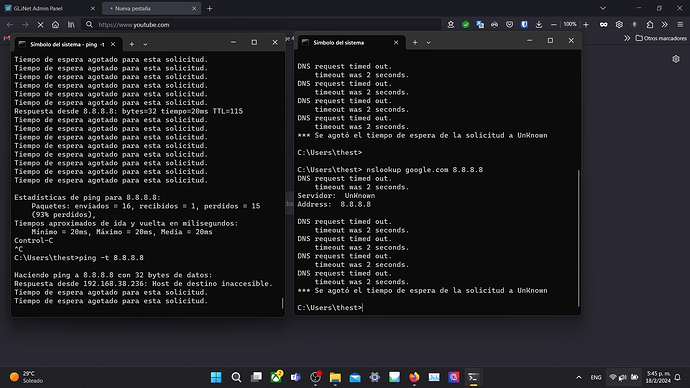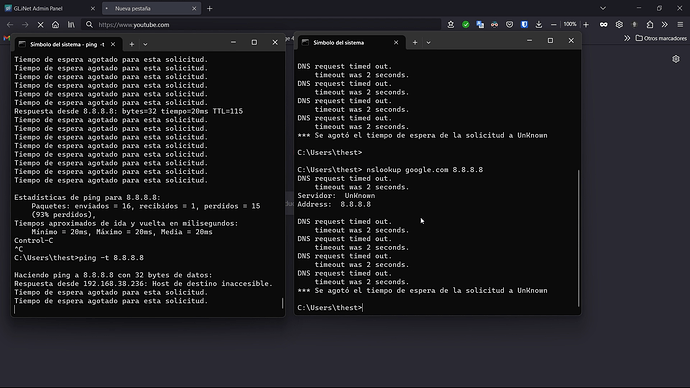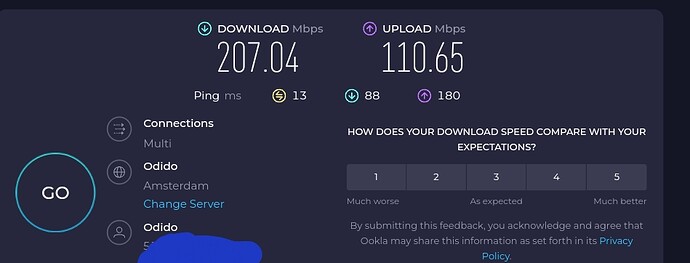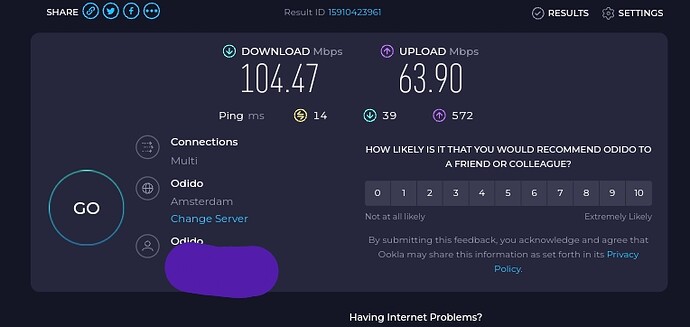The next time it happens I will, but after this I’m starting to think it could be another thing
The ping shows that the internet connection (without DNS) is running fine.
Do you also have the problem, without OpenVPN running?
does
nslookup google.com 8.8.8.8
give a result?
I’ll post an update next time, I haven’t tried with OpenVPN disabled
As extra information, I am using DoH through AdGuard Home
UPDATE: I had the same problem a few minutes ago, this time I wasn’t able to ping 8.8.8.8, only one time it was successful, as you can see I am loading youtube on the background and it doesn’t load, and I also tried nslookup google.com and it shows timeouts. I also tried on my phone and the web pages loaded with no problem, so it might be a problem with windows, but the most weird thing is that it also happens sometimes while I’m browsing on the phone so it definitely has something to do with the router ![]() it doesn’t happen simultaneously on every device I guess
it doesn’t happen simultaneously on every device I guess
I am connected to the 5GHz network, full signal. I feel like it’s just a bug on the snapshot OpenWrt version this router has. Like I said after a few minutes it loads normally, if I disconnect and reconnect to the network it also loads instantly. This also interrupts my downloads of large files
I was a beta tester, and I’ve been following this thread since it began and have felt bad that I didn’t discover or see any of these problems. Mea culpa.
I was thoroughly impressed with the performance. But we were using builds with the closed source driver. I had the router at one end of a 3500 sq ft apartment and good 2.4 and 5 coverage at the far end, through steel reinforced concrete walls, up to the penultimate wall. In an environment where a scan would show something on the order of more than a hundred SSIDs, on a airport flight path. Frankly, the most difficult environment I’ve been in. Better coverage than an Asus router sited about 1/3 of the way. I was focusing on wireguard/openvpn server/client configurations, and dual wan failover. The issues I noted were in VPN policies. I had no stability issues over a couple of months.
I’ve got seven routers with closed source broadcom components, as to which problems like these are impenetrable, and I’ve always thought (and said here) that I think GL-Inet is right to be leveraging Openwrt with opensource drivers and layering on their interface. And at $160 it is still hundreds cheaper than the routers with the same power.
I would be curious to know what ASUS router you were running it against? I only ask because I just put my RT-AX86U back online and retired the Flint2 until some issues get worked out.
I tested for the Puli AX and for the most part using it for cell internet and another router for WiFi its been running strong. Unfortunate I was turned down for the Flint 2 testing.
I would think a house with 105 devices on WiFi would be a great test so I was surprised I was turned down. Oh well…. But my ASUS does have the same coverage and comparable speeds as the Flint 2, but of course multiple factors to consider like interference from other WiFi’s and how crowded your area is, materials of your residence for walls and other factors.
An AC86U and an AX86 Pro.
105 devices? That’s 400 watts in standby 24/7 and $800/year in electricity!
I really think those issues will be solved soon, they’re working on it, my Flint 2 has been running for several days and I’ve only had a single issue. Of course it’s better now compared to previous versions. I personally love the GL.iNet web GUI, the design and how much it has changed compared to the v3, super easy to use and slowly getting advanced features, and it already has features that you won’t find on a router with a similar price.
Of course we have LuCI but 80% of the time I want something fast to set and more practical, I’m pretty sure that’s the case for a lot of people
Only reason i had to revert back from v4.5.7 was because my computers stopped getting IPv6 address. Error log showed: you have delegated ipv6-prefixes but haven’t assigned them to any interface.
I updated from v4.5.6 to v4.5.7 without resetting settings.
@alzhao @alex_zheng is there any estimate on when they will release a stable version or a new beta version compatible with all packages in the repository, such as SQM?
Is it usual for the Flint 2 to have such high memory usage when using external storage? I made a thread about it, but got no replies.
Currently running 4.5.2 and when I connect external storage either a USB stick or external HDD formatted in NTFS and start a webDAV share, my memory usage seems to spike up quite a bit. I run AGH with a few big lists and before connecting the external media, it sits anywhere from 45-50% memory usage and after connecting the external media and accessing files, it’s currently sitting at 85% memory usage.
Edit: With external drive connected, it reads as 85% Used, 45% Cache. When I stop the webDAV share and eject the drive, it goes back down to 53% Used, 19% Cache.
Edit 2: This also happens when creating and using an SMB share, the memory usage went up to 96% and when I ejected, back down to 51%.
It’s pretty normal, samba (smb) uses much RAM.
To understand RAM better: https://www.linuxatemyram.com/
I’m currently trying to gather data for an OpenWrt bug report. So, could someone with fast internet share their 2.4GHz speed test results from an older firmware or an OpenWrt snapshot and then again when using the beta firmware? Preferably while using similar WiFi settings.
You should limit the 2.4GHz mode to N or use a device that doesn’t support 802.11ax. And you shouldn’t move your devices around much throughout all of the tests, since that could impact the results.
Second this, it will be good if we can get a beta version every week/BI Weekly for testing, lots of experience users will help to test here.
You don’t need fast internet for that. Using iperf should be sufficient.
They’re welcome too, but I’m asking for generic speed tests as they’re less complicated for the average user to run. That plus most of the people who’ve reported the 2.4GHz issue have already shared speed tests via their phones this way, but nobody has shared speed tests from both firmwares.
Currently i run a MT6000 on r25246-bf304d10e9 self compiled since yesterday, but 2.4ghz isn’t allowing me to connect at all.
Looking to the commits i guess i have to wait a little or maybe go with a OpenWrt snapshot.
However i got another MT6000 as dumbap on the oem firmware 4.5.7.
Surprisingly its really fast.
My isp speed is 400mb/s download and 400mb/s upload.
I’m currently using r25251-afca1236f3 and 2.4GHz is working. Although, I still can’t get more than 100Mbps with it.
I created a custom image via the firmware selector since ASU seems to be having issues at the moment.
I managed to get my wifi working on one phy after i used wifi config for r25246-bf304d10e9.
here are my results:
I don’t know if wed makes a difference here should i enable it?
Depending on your config maybe you’re affected by that race condition that was recently mentioned in the OpenWrt forums?
Unfortunately I don’t think WED does anything for 2.4GHz.
As for your speed test, that device is using 802.11n, right? Since AX devices don’t seem to be affected at all.



